Project Background
The Philippines is an archipelago of 7,641 islands with a population of more than 107 million people. Avoidable blindness affects roughly 600,000 Filipino people. Cataract is the leading cause of blindness, with new cases overwhelming the current health system.
Those suffering from avoidable blindness live mostly in impoverished areas and under-serviced islands, with limited access to even the most basic eye care. Sadly, the majority of eye health services are based in the capital, Manila, making them unaffordable and inaccessible to many.
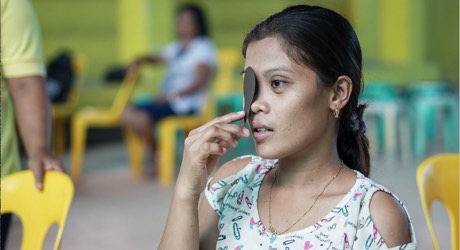
Project Objectives
The Foundation is committed to improving community eye care by making services more accessible across 4 provinces. Through this project, The Foundation will establish or equip provincial eye centers and work with local eye health teams to deliver outreach eye care to remote and regional areas, including in schools.
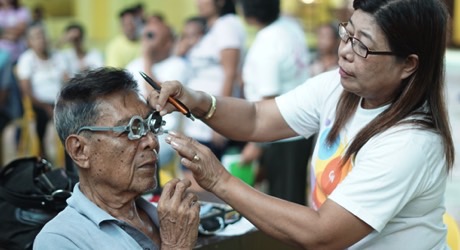
Project Results
Results from the first quarter of 2019 are showing great progress. With your support, The Foundation has achieved the following out-puts between January and March 2019:
- 17 surgeries and treatments performed and 76 glasses distributed for visual impairment
- 986 people screened
- 3 ophthalmic nurses trained
The Foundation is on target to screen 5,400 community members, including school children, perform 180 sight restoring surgeries and train as many as 3,200 community health workers and eye health professionals.
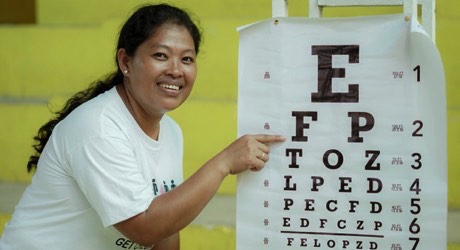
Case Study: Constancia
The Foundation has made waves on the surfing island of Siargao, southern Philippines. Local residents – from fisher-folk to surfers and older people – had their eyes checked at four eye screenings that were held across the island.
One of those eager to have her eyes checked was 84-year-old Constancia. Life hasn’t always been kind to Constancia; she has been widowed three times and now lives alone in a small wooden house. She receives support from a local co-operative and makes ends meet by cleaning houses and occasionally some of the island’s resorts.
Constancia has cataract in her right eye, limiting her ability to work and care for herself. She is looking forward to taking more cleaning jobs once she can see again.
Although she can’t remember exactly when her vision started deteriorating, Constancia does remember crossing to the mainland 20 years ago, to have her left eye operated on.
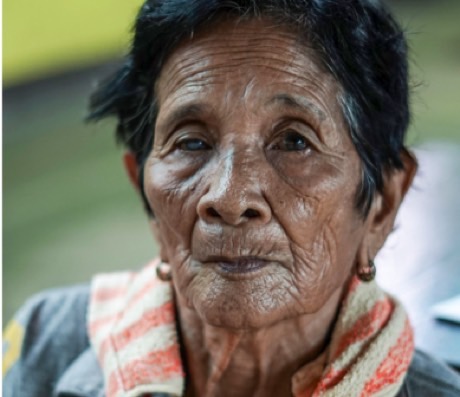
But despite that successful operation, Constancia still practices lo-cal medicinal beliefs, extracting the sap of a special weed known locally as tawa-tawa. She drops the sap to her right eye, believing it will melt away the cataract.
Unfortunately, the herbal medication has done nothing to improve her condition and she is hopeful that The Foundation will help give her the sight-saving operation she needs.
Two of Constancia’s daughters are still alive but live far away. She visits them once in a while along with her 10 grandchildren and is very much looking forward to seeing them all clearly.
Initiatives like these allow eye problems like Constancia’s to be detected at the community level and then be referred to the district and provincial hospitals for treatment.

“A lot of people have been helped by The Foundation,” said Shalom Dapar-Sumaguila from the Department of Social Welfare and Development, one of The Fred Hollows Foundation’s field partners in The Philippines.
“We see heads of families who can now see and return to their jobs and earn again, and children who stopped schooling who can now study again. It’s really an accomplishment. It cannot be done by [our] Department alone, so we really need to converge with other organisations, like The Fred Hollows Foundation.”
What Next?
The Foundation has celebrated its fifth anniversary in the Philip-pines by announcing it will expand its sight-saving work to four new provinces this year.
The Foundation’s Philippines Country Manager Mardi Mapa-Suplido said projects to end avoidable blindness would be launched in Antique, Negros Oriental, Oriental Mindoro and Quezon provinces following the success of existing projects.
Can I Visit this Project?
Interested donors should contact The Foundation.
Project Background
The Fred Hollows Foundation has worked in the Philippines since 2014.
In a population of around 100 million, avoidable blindness affects roughly 600,000 Filipino people. Cataracts are the greatest problem, affecting over 1% of the population, or 1.1 million people. There are currently over 330,000 people requiring urgent cataract surgery, and new cases are overwhelming the current health system.
Those suffering live mostly in impoverished areas, with lack of access to even the most basic eye care. Sadly, most eye care services are in the capital, Manila, where the wealthy can afford private ophthalmologists’ fees.
Working alongside the Department of Health in the Philippines, The Fred Hollows Foundation has developed an effective model for ensuring all provinces in the country have access to high quality and affordable eye care. This model involves using the national health insurance program, PhilHealth, equipping provincial eye centres with trained health professionals and equipment, and educating local communities in how to access eye health services.

Project Overview
The Fred Hollows Foundation is working to reduce avoidable blindness in marginalised communities in the Philippines. This will be done through setting up eye centres in regional and under-serviced provinces of the country, educating communities about the eye care services available, and increasing the uptake of eye health services to tackle the surgical backlog.
Overall in 2019, the project is looking to screen 5,400 community members, including school children, and perform 180 sight restoring cataract surgeries.
In order to build the capacity of the local health system, The Foundation is investing heavily in the training of local health professionals, community health workers, community leaders, teachers, and school health staff in eye care. In fact, in 2019, this project aims to train over 3,200 of these individuals in regional provinces.
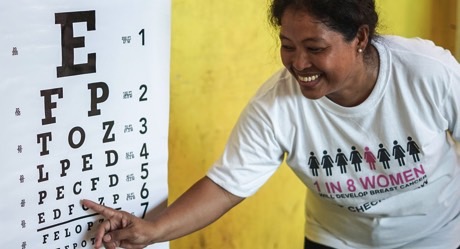
What's Covered in Project Cost
The $20,000 donated from The Footprints Network will allow The Fred Hollows Foundation to achieve the following outputs as part of the broader project in 2019:
- Screen 230 community members and students;
- Train 140 health professionals, community health workers, community leaders, and teachers and school health staff in eye care; and
- Equip 4 eye centres with eye health equipment.
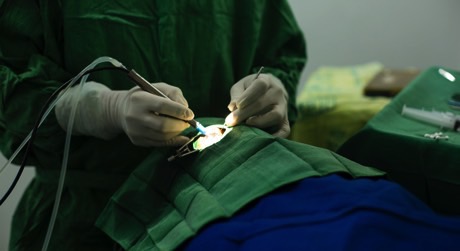
Partners and Community Involvement
The Fred Hollows Foundation always works in partnership with like-minded organisations and health providers to ensure the greatest reach and biggest impact of our sight restoring work. Where possible, we work with governments to better implement eye health systems and train local doctors, nurses and health workers to help their communities.
In the Philippines, this project is working closely with the government, the Department of Health, and the country’s health insurance program, PhilHealth. Further, working with local communities is key to this project’s success. Training of community leaders, community health leaders, and training health professionals to train others, ensures the sustainability of this approach, as well as strengthening the local health system.